There are three passion flowers of edible interest: Passiflora edulis, Passiflora incarnata, and Passiflora feotida. The first is found in the commercial drink Hawaiian Punch. Some people grow it for food. The P. incarnata is probably the most common one found in the southern United States and is the most commonly found wild passionflower that is consumed. P. foetida gets a bad rap because of its name but is nearly as edible as P. incarnata.
P. incarnata is a long-growing vine that starts producing fruit in late spring and will continue to grow and produce fruit until cold weather intervenes. Its green fruit is edible cooked and its ripe, yellow fruit is edible whole raw though usually only the ripe pulp and seeds are consumed. In fact, I like to put them in my water bottle while hiking. They add a bit of tartness. P. foetida is a slightly different plant. The blossom is similar to the P. incarnata but smaller, frillier, and it produces a bright red fruit. All of the fruit is edible: The red outside and tart-sweet seeds and pulp inside. A fourth Passiflora, P. leutea, is technically edible but has a poor flavor and taste so is generally left alone by humans.
Where confusion occurs with the passion flowers is regarding edibility of their leaves. Nearly all if not all passion flowers have a bit of cyanide in their leaves except P. incarnata. That species has been specifically examined and it does not contain cyanide. Its leaves are boiled as a green — not that good — and the tea is used like a sedative, mild and not that tasty. It is this writer’s opinion that leaves of other passion flowers should not be consumed nor should one eat the fruit of ornamental passion flowers, if they produce fruit at all. Stick to eating the fruit of Passiflora edulis, Passiflora incarnata, and Passiflora feotida. To read more about the passion flowers go here.
A perennial question I hear often is about how safe it is to forage in cities or suburbia? It’s one of those difficult questions that confronts the modern forager. Steve Brill, who got his start and boost in fame for foraging in New York City’s Central Park (pictured right) suggests that some city parks might be healthier places to forage than nearby agricultural land. It’s a good point well taken. In the part of the world where I live there is a greater variety of edibles in suburbia than in state parks. But the question is, are those city-dwelling species safe to eat?
As there is a measure of pollution everywhere it’s difficult to escape it. The question then becomes how polluted, and deciding that is part art and part science. I will admit I am tired of reading “don’t forage within 100 feet of a road.” I would ask what road? Thirty feet uphill and up wind from a country dirt road? That probably wouldn’t bother me. One thousand feet downhill and down wind from the Interstate? I probably would not forage there. A built-up flowerbed in the city watered with clean water? That’s not much of a problem. A pretty pond just below a parking lot out in the country? No. One of my annual classes is called an “urban crawl.” We wander around the streets of a small city. We see lots of lawns. Which ones are safe? The ones with weeds. It’s the all-grass lawns one should avoid because the weeds there have been killed. And let me add one never forages for food along railroad tracks. There’s a good explanation why here.
A more difficult issue is how the land was used before its apparent use or non-use. An example that comes to mind is a park out in the country where I would dig up edible yams for demonstration. It’s a very lush, fertile place. But I also noticed my hands were harder to clean than usual after digging up the yams. Why? Because on that very spot a house once sat and it burned to the ground. The soil is full of soot, and from what else is anyone’s guess. In cities some folks plant community gardens on vacant lots. Little thought is gone into finding out what was on that lot before it became available for gardening, or park use.
The art part is looking at the land, are we uphill or down hill, which way is the prevailing wind (important regarding dust debris from busy roads) what is the water source, are the plants above the contaminates such as a tar road or below a shopping center. As for the water, is it polluted up-stream? A lot of animals go to the bathroom in water. And of course what is/was growing on the land, and how was it used in the past? These are not always easy questions to answer. One can get good at guessing but one is never totally sure. I was sick once because a power line area reported NOT to have been sprayed had been sprayed. Sometimes you can do everything right and still be wrong.
A significant number of invasive species were intentionally introduced by government agencies. Locally several come to mind from the smelly Skunk Vine (rope) to Brazilian Holly (a honey-producing ornamental.) One tropical tree was introduced three times in Florida, the Jambul. We saw one fruiting this past weekend during a foraging class in West Palm Beach in Dreher Park. Creating a large shade tree, three species of Jambuls are common. One produces a black fruit, another red fruit, and a third produces what we call “cloves” which is used as a spice. As nutritious as the fruit are, one problem is they are mildly astringent. You either have to like that, or, sprinkle salt on the fruit before eating. That helps reduce the astringency some. And while spring and summer are the reported ripening time of Jambuls locally — I have definitely harvested them in late June — this is the second week in September and we found some very ripe ones. To read about the Jambul click here.
As foragers we have learned to cope with bees, hornets, spiders, fire ants, redbug and poisonous snakes. We should add to that list hairy caterpillars. Not all hairy caterpillars are bad but enough are and worst of the lot in North America is the Asp Caterpillar, also called the Puss Moth Caterpillar. This fuzzy little wiggly has hairs with toxic connections. Even gently touching one can result in a painful envenomation that can create a burning pain, swelling, nausea, itching, abdominal distress, vomiting, and headache. These symptoms can last for days and travel, such has being stung on the hand but radiating up to the armpit. I did not find any death reports but there are occasional instances of numbness, vision problems, respiratory distress and shock. The pain has been likened to breaking an arm, being hit with a hammer and worse than kidney stones. Clearly difficult to ignore. The Asp Caterpillar likes the south, mainly Texas, Louisiana, Florida and North Carolina though Texas has more reports of encounters than all other states combined. However, incidences have been reported as far north as Maryland and as west as Arizona. Peak months for getting stung are July through November with October having the most cases. Also known as Megalopyge opercularis, it is considered one of the most toxic caterpillars in North America and is also found in Central and South America.
One problem is that most health care professionals don’t recognize the signs and symptoms of the caterpillar’s envenomation, and who could expect them to? Home remedies for pain relief include using tape to pull off the stinging hairs (really spines) ice packs, oral antihistamines, baking soda on the site, hydrocortisone cream, juice of comfrey and calamine lotion. Medical literature suggests the pain can be treated with intravenous calcium gluconate or systemic corticosteroids. Unfortunately nothing seems to provide prompt relief. Avoidance of the creature is the best prevention. Look but don’t touch. I have been fortunate enough to see the caterpillar ahead of time or have it land on my clothes rather than on bare skin. And it does like trees so attack can come from above.
Upcoming Classes: Sunday, September 14th, Florida State College, 11901 Beach Blvd., Jacksonville, FL, 32246, 9 a.m.; Saturday, September 20th, Spruce Creek Park, 6250 Ridgewood Ave. Port Orange, FL 32127, 9 a.m.; Sunday, September 21st, Wickham Park, 2500 Parkway Drive, Melbourne, FL 32935-2335, 9 a.m.; Sunday, September 28th, Bayshore Live Oak Park, 23000 Bayshore Rd., Port Charlotte, FL 33980, 9 a.m. For details go here.
Eat The Weeds On DVD. My foraging videos do not include alligators but they do cover dozens of edible plants in North America. The set has nine DVD. Each DVD has 15 videos for 135 in all. Some of these videos are of better quality than my free ones on the Internet. They are the same videos but many people like to have their own copy. I burn and compile the sets myself so if you have any issues I handle it. There are no middle foragers. And I’m working on adding a tenth DVD. To learn more about the DVDs or to order them click here.
On the Green Deane Forum we post messages and pictures about foraging all year-long. There’s also a UFO page, for Unidentified Flowering Objects so plants can be identified. Recent topics include: Mulberry Question, Oldest Living Tree, Flint & Knife, Landfill, Tomato Advice, A goldenrod of Sorts, Foraging Rules, American Beautyberry, Tobacco Ash, Identification Helper, Mullein, Reishi, Plum-ish Looking Fruit Tree, and Another Olive Like Fruit. The link to join is on the right hand side of this page.
If you would like to donate to Eat The Weeds please click here.

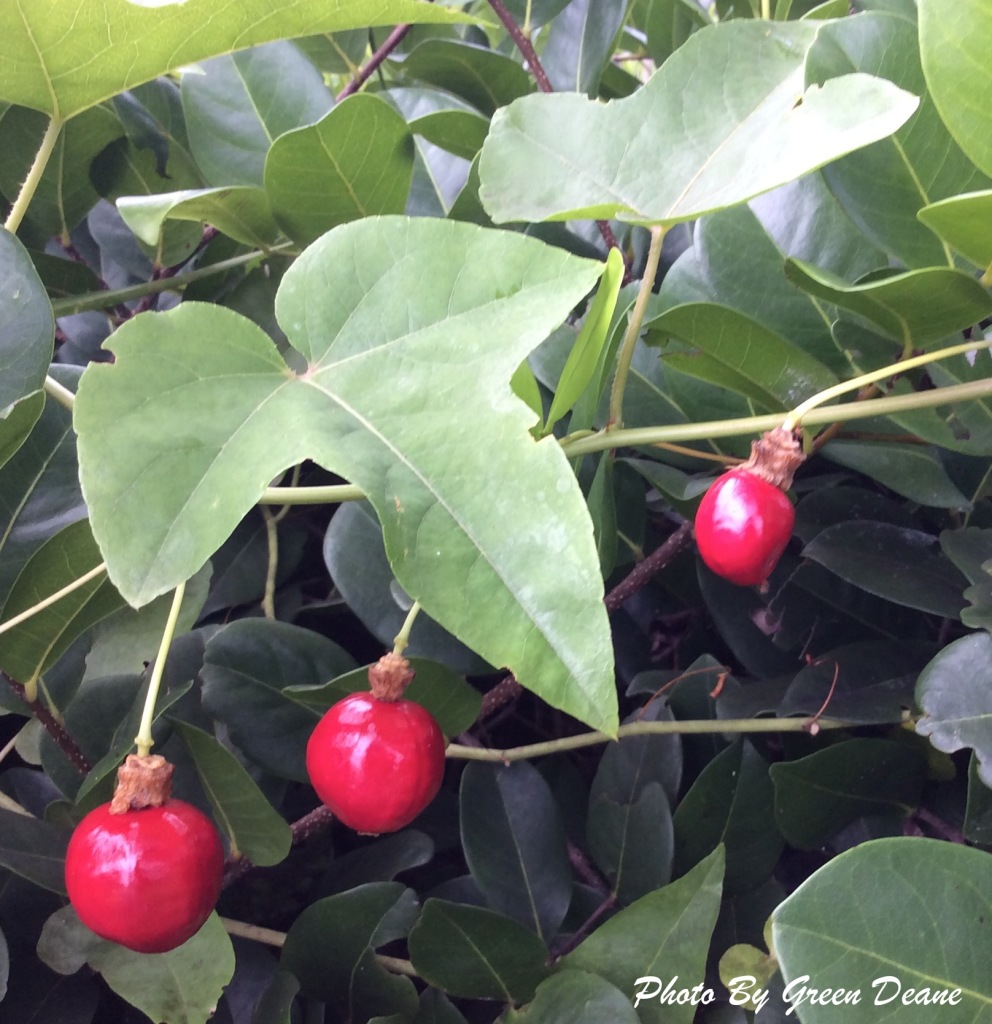


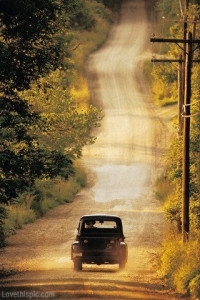
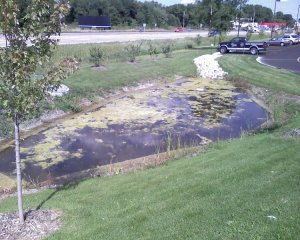
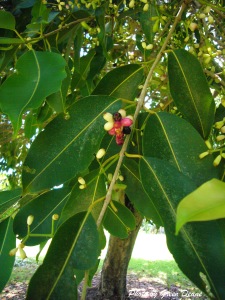
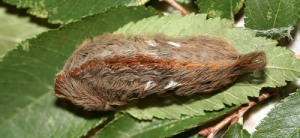
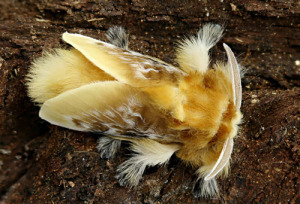
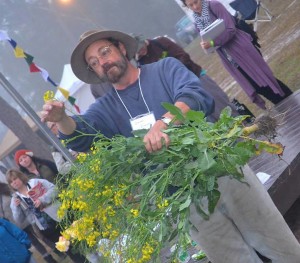


Hi, Green, Really liked your discussion on how to think about pesticides and road contamination.
Peggy
Excellent newsletter (as always).
I was doing a horticultural analysis of a property a month ago for a couple interested in seeing what useful/edible plants were on their homestead and what fruit/nut trees their soil would support. While pointing out some wild muscadines, my hand brushed against something that stung like fire. The burning pain did exactly like you said: radiated up my arm to my armpit, like a reverberating hornet-like stinging.
I never could find the thing that stung me but I did my best to ignore it for the additional few hours I was there. It must have been a puss caterpillar.
Interestingly, this property was part scrub and part swamp. I found multiple varieties of wild blueberries along with lots of reindeer moss, some prickly pear, cypress and… horror of horrors… a patch of cogongrass.
Yes, the puss caterpillar is nasty…Another remedy to try is green papaya sap (papain) or ever handy Adolf’s Meat Tenderizer (bromelain). These proteolytic/protein splitting enzymes destroy toxic molecules and can also be used on jellyfish stings and various plant/insect rashes and bites…Moisten skin and shake on Adolf’s and rub into area or scratch a green papaya and apply sap…I use Vitamin C powder externally and internally where it is a premier antihistamine/antinflammatory…Clays, like Redmond’s, are also great detoxifiers externally and internally.
I am glad to know about the puss moth caterpiller. I have fortunately never encountered one to date. Another caterpiller that I have had frequent encounters with, especially in Central Florida, is the Orange Dog Caterpiller. They do not sting but instead toss their head back over their body, two antenae-looking red things protrude from the head and sparay an awful smelling chemical which is hard to wash the odor away. My grandfather was a grove owner in Indian River citrus belt and spoke of being sprayed in the eyes by the Orange Dog. He temporarily lost vision, had immense burning pain, and breathing in a direct shot of the rancid chemical caused breathing difficulties and nausea. He spoke of stings from other caterpillers including the saddle back, and used first aid of tabacco juice or licking a penny and placing on the sting. Apparently the copper-salyva poultice counteracts the venom.
Hi Green. Glad to hear about the Asp. I’ll be on the look out for it. As we have been spending a lot of time in the woods building a camping shelter, we did brush a “saddle back”. It got my brother worse than me, but I felt it instantly. I first learned about them when my wife was tending to her window flower boxes. Both of her hands were in extreme pain. I investigated and found the little creatures, LOTS of them on one certain plant she had planted there. A quick internet search identified it. Although not as dangerous as the Asp, the burning pain will certainly get you attention. For anyone wanting to know, they are about an inch or less long, green in color, hairs at both ends, and a distinct brown circular spot in the middle of their back, hence, saddle back. The one that got us, was on a small briar, something I wouldn’t even think twice about or even pay much attention to. Was just a little thing, not even many briars on it. Anyway, the saddle back was at the very top, almost camouflaged. And the funny thing is, he didn’t do anything, it was us that brushed up against his lil hairs. So yeah, I don’t touch any caterpillars with hairs. lol
How safe is it to forage in cities or suburbia? As said it is “Pollution” be it little or intense that matters. In this respect I don’t think I’ll make it more complex if I also worry about future foragers say 50 or 100 years to come. It requires cooperation from those inevitably responsible for polluting the land (pesticides and fertilizers manufacturers, commercial companies, farmers etc. ) to attempt improving methods of reducing pollution. The following holy verse compares good doers and bad doers with good and bad lands: “ And the good land – its vegetation emerges by permission of its Lord; but that which is bad nothing emerges except sparsely, with difficulty. Thus do We diversify the signs for a people who are grateful. “
In my garden I’ve a lemon tree not yet blossoming. I’ve noticed some green Caterpillers on part of the leaves ( something like shown during nursery children school to make them learn alphabet such as A for Apple, C for Caterpiller). The same happened last year and exactly at these same days of almost the end of the rainy season here in Sudan. However by a bit net searching and in accordance with: Citrus Pest is Leafroller – by Pam Peirce. I may name it “ Archips argyrospila “ – please see:
m.sfgate.com/homeandgarden